How to Create and Restore Backup in Windows 11
Your data is important, be it financial records, memorable photos, or work files. And the easiest way to secure your data is by creating data backups and avoid damage due to accidents and disasters.
For a Windows 11 PC user, there are many ways to backup your data and files. We’ve covered how to backup and restore Windows registry in the past, we’ve also shared some free backup tools for your PC.
In this post, I will guide you how to create a backup of your data and then restore them using two Windows native tools, File History and Backup and Restore.
Table of content:
The "File History" feature
File History is one of the features that were introduced with Windows 8. It is a file-based and snapshot-based backup mechanism that backs up all files and folders stored under your user account.
This includes Library and user account folders including Desktop, Documents, Downloads, Music, Pictures, Videos, etc.
The most interesting part of File History is that it lets you quickly check the older versions of a file and restore it (more like the revision history feature of Google Docs or Microsoft Word).
Back up and restore via File History
Let’s start with how to enable File History to back up and restore files in Windows 11. First of all, you need a portable hard disk or pen drive of adequate storage space for using File History.
For example, if you have 10 GBs of data stored in your computer, then you should get a portable drive of at least 20 GB capacity.
The reason being, it stores multiple versions of each file, so you need bigger drive.
Back up data via File History
- Plug in the portable hard drive or pen drive in to your computer.
- In the search bar on the Taskbar or in the Start menu, search for
control paneland click on the first result named Control Panel. - Under System and Security in the Control Panel’s home page, click on Save backup copies of your files with File History.
- Click on the Turn on button at the bottom right to enable File History.
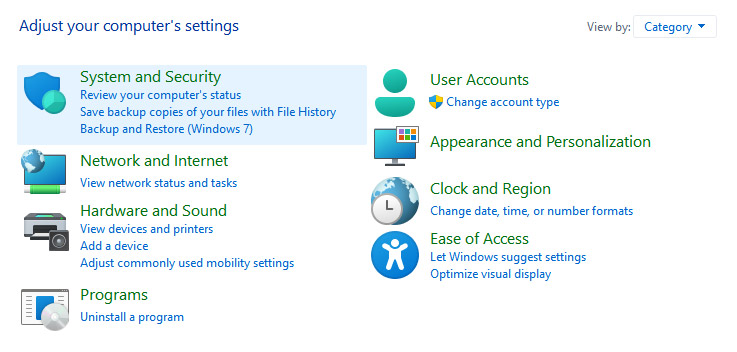

Restore data via File History
- On the File History screen, click on Restore personal files from the options in the left.
- Choose one of the backups and click the green restore icon to restore it.
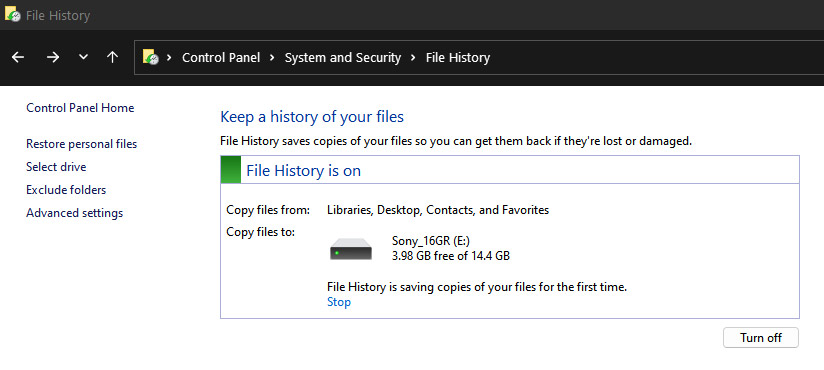

Restore a file via File History
- In the File Explorer, navigate to a file, right-click it, and click Properties.
- Switch to the Previous Versions tab, select a version, and click Restore.

Configure File History options
File History also offers a bunch of configurations to customize it per your needs.
You can exclude folders you want to keep away from backups, configure backup settings like when to back up and how many backups to keep, and check and clear storage space used by File History.
Follow the steps in below sections:
Exclude folders from File History
- On the File History screen, click on Exclude folders in the left.
- Under Exclude from File History, click the Add button, then navigate to the folder you want to exclude, and finally, click Select Folder.
- Repeat the last step for as many folders as you’d like to exclude.


Configure File History advanced settings
- On the File History screen, click on Advanced settings in the left.
- For Save copies of files, choose a frequency per your needs. I suggest Every hour or less for sensitive files else Every 12 hours or more.
- For Keep saved versions, choose a frequency per your needs. I suggest 1 year or more for sensitive files else 6 months or less. If you choose a long frequency here, you will need a bigger-sized storage drive for File History.

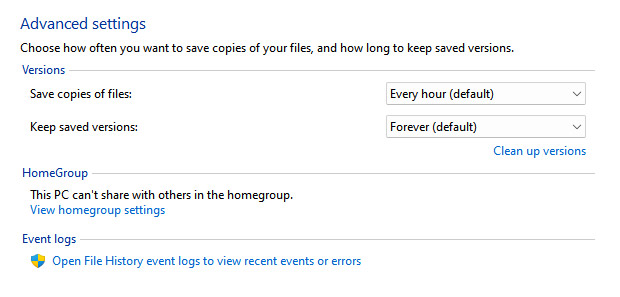
Clear space used by File History
- On the File History screen, click on Advanced settings in the left.
- Click Clear up versions in the middle-right of the screen, then choose one of the options under File History Cleanup, and finally, click Clean up.


The "Backup and Restore" feature
Backup and Restore – aka Backup and Restore (Windows 7) — is the older yet more powerful backup option packed with a bunch of extra goodies.
I especially like its feature called System Image that backs up the whole system including the boot partition of Windows, enabling you to restore in case of a system failure too.
Back up and Restore data
Let’s start with a tutorial on enabling Backup and Restore to back up and restore data in Windows 11. It’s easier to enable and use if compared to File History.
First of all, you need a portable hard disk or pen drive of adequate storage space for using Backup and Restore.
For example, if you have 100 GB of data stored in your computer, you should get a portable drive of at least 120-150 GB capacity.
The reason being System Image takes more space, so you need bigger drive.
Back up data via Backup and Restore
- In the search bar on the Taskbar or in the Start menu, search for
control paneland click on the first result named Control Panel. - Under System and Security, click Backup and Restore (Windows 7).
- Under Back up or restore your files, click Set up backup on the right.
- Under Save backup on, choose a backup destination and click Next. I suggest using a portable hard disk with ample amount of free space.
- Choose Let Windows choose (recommended) here and click Next.
- Review your backup settings and click Save settings and run backup.
- Windows will start creating the backup for the first time, which may take up to some hours to days depending on the amount of the data. Once the first backup is done, Windows will back up regularly per the set schedule.


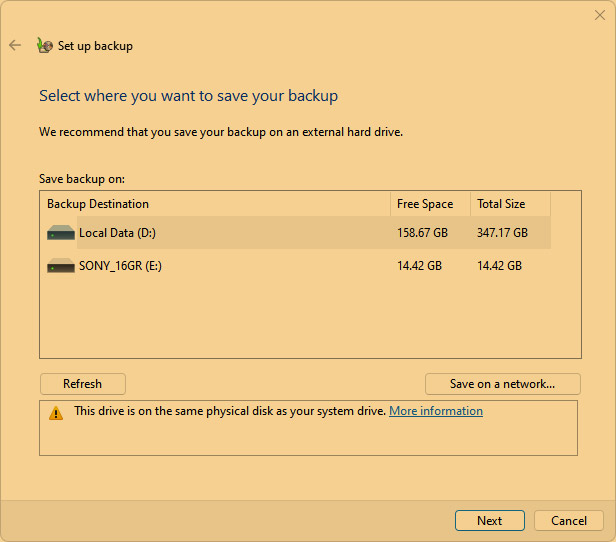
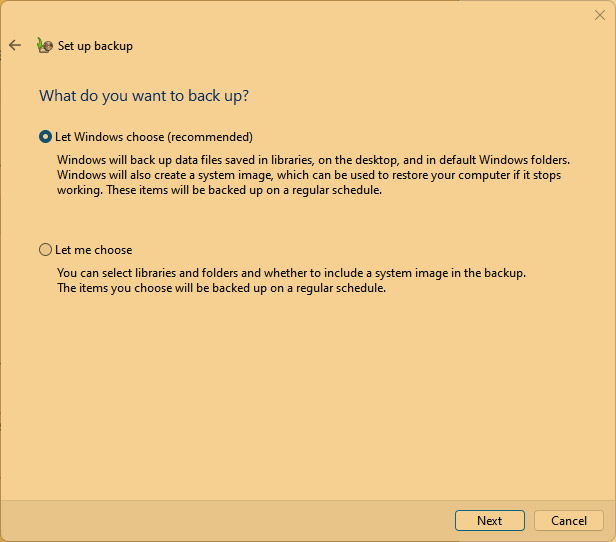
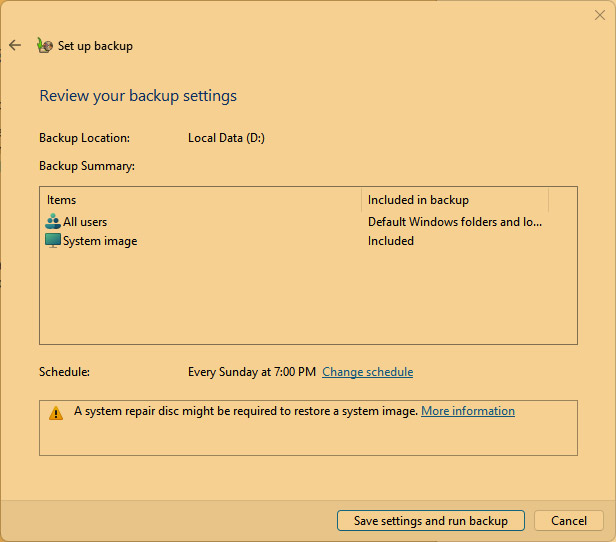

Restore data via Backup and Restore
- Under Back up or restore your files, click the Restore my files button.
- Click the Browse for folders button and choose a folder, then click Add folder. Repeat this step until all folders shown under Browse the backup for folders or drives are added and shown under Restore files.
- Under Restore files, click Next and then click Restore to restore all data.



Restore a file via Backup and Restore
- Under Back up or restore your files and click the Restore my files button.
- Click the Search button, then search for files or folders, then select all files or folders you want to restore, then click OK. Repeat this step if needed.
- Under Restore files, click Next, then click Restore to restore chosen files.



Configure Backup and Restore options
Backup and Restore also offers configuration options like File History to change its settings and check and clear storage space used by Backup and Restore.
You can use its options to delete file and folder backups as well as System Images.
Change Backup and Restore settings
- Under Back up or restore your files > Backup, click Change settings.
- Follow the on-screen instructions that are similar to the steps shown under the Back up data via Backup and Restore section given above.

Clear space used by Backup and Restore
- Under Back up or restore your files > Backup, click Manage space.
- Click View backups, select a backup, and click the Delete button. Repeat this step for all the old backups you are sure you do not need now.
- Click Change settings, select Keep only the latest system image and minimize space used by backup, then click the OK button. Do note that this setting will delete all old system images except the latest one.

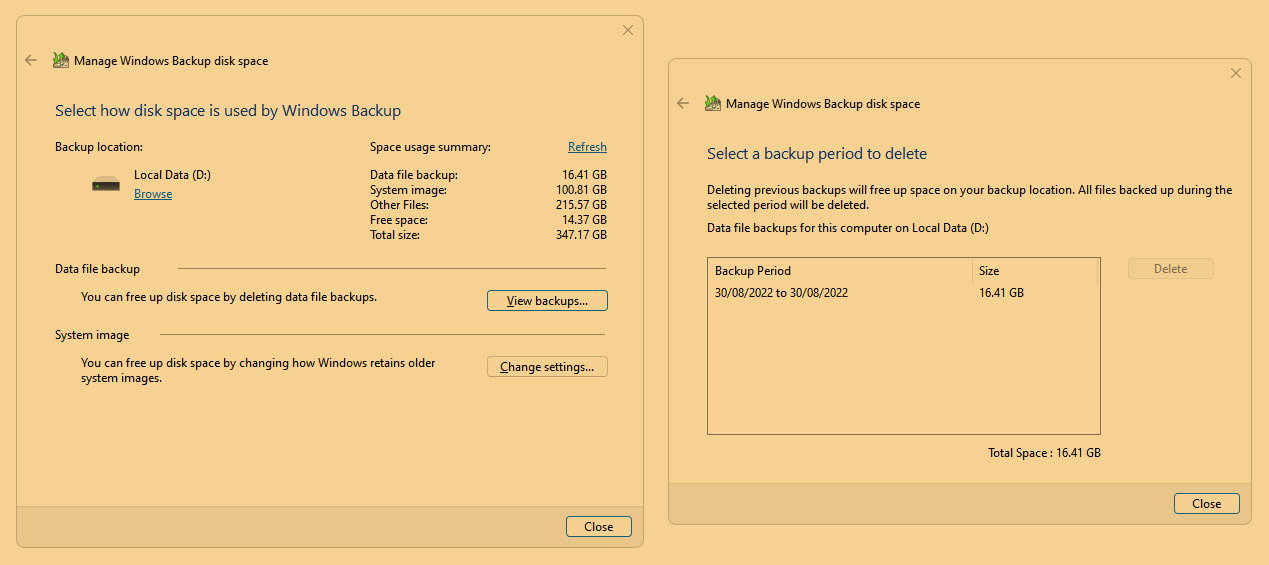
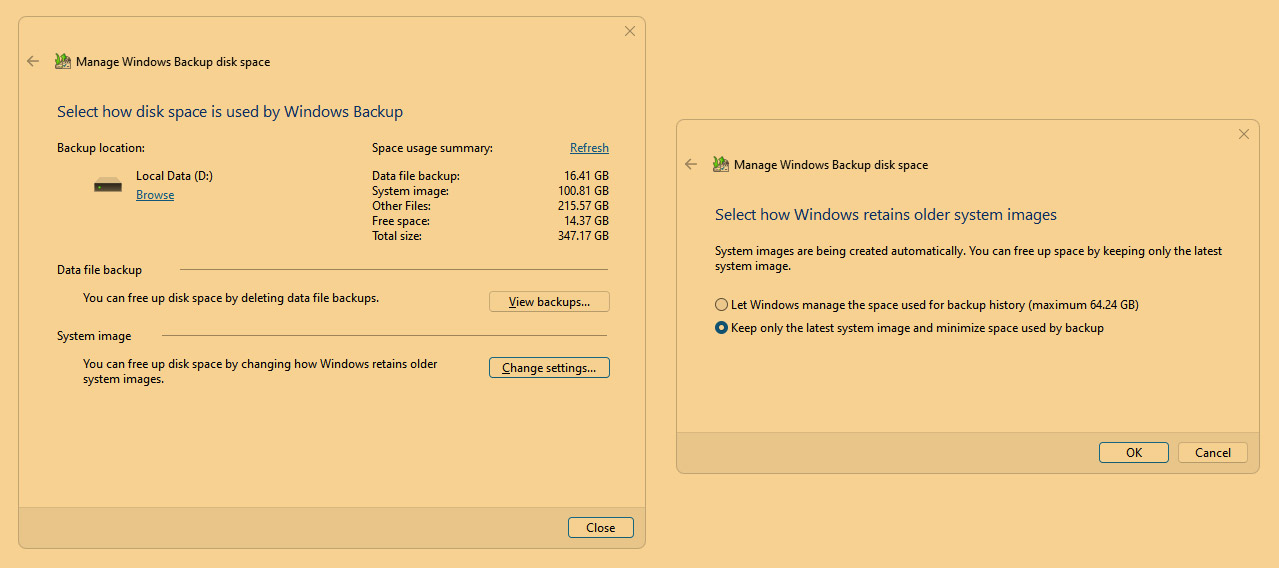
Hope this guide helps you to safeguard your important data from potential loss. I suggest anyone should have at least two levels of backups with redundancy, i.e., you have two types of backups and two copies of each of those backups.
With the options given on this list, you can use File History and Backup and Restore in Windows 11 to create two types of backups.
Then, you can manage two copies of each type — four backups in total for a disaster-proof plan.